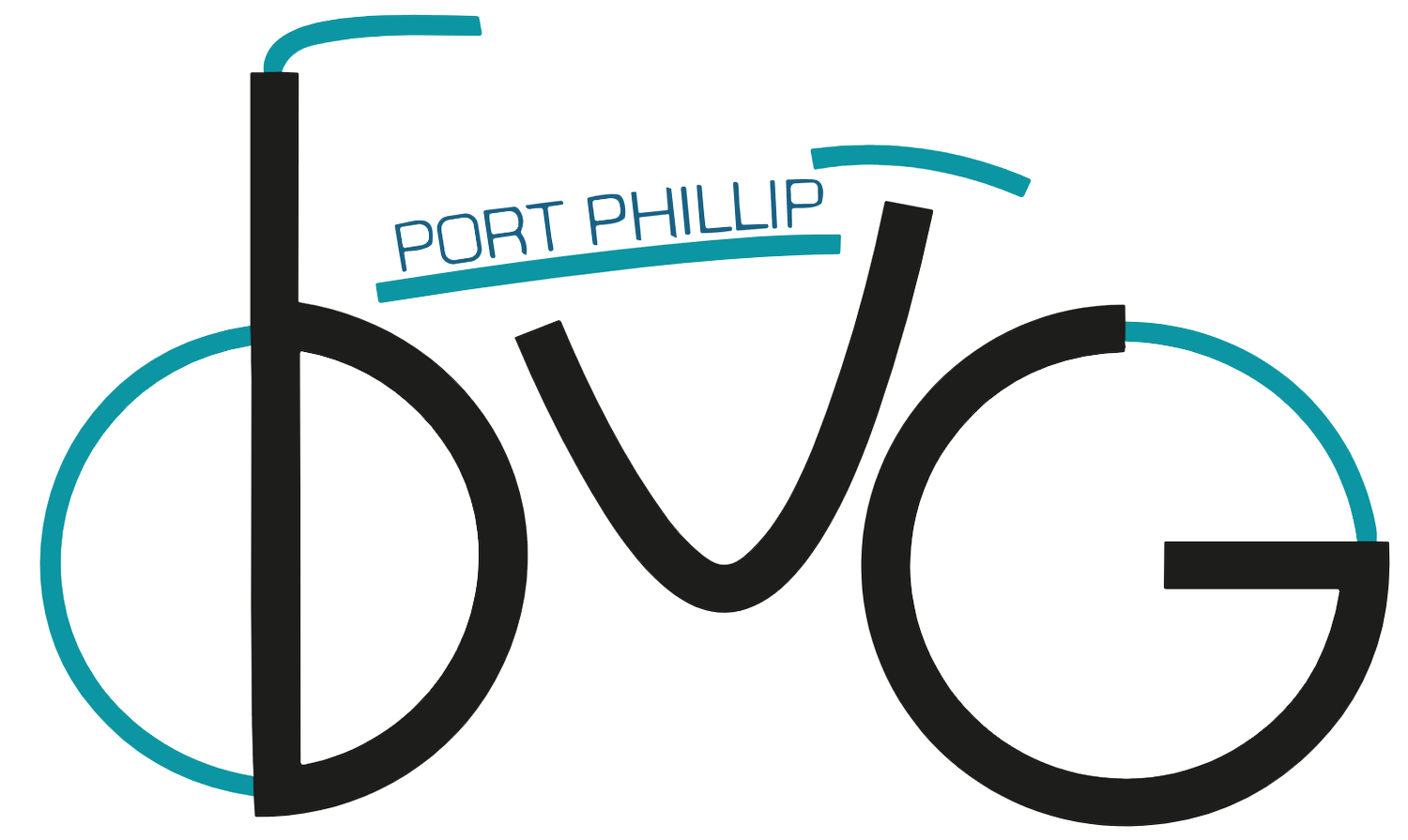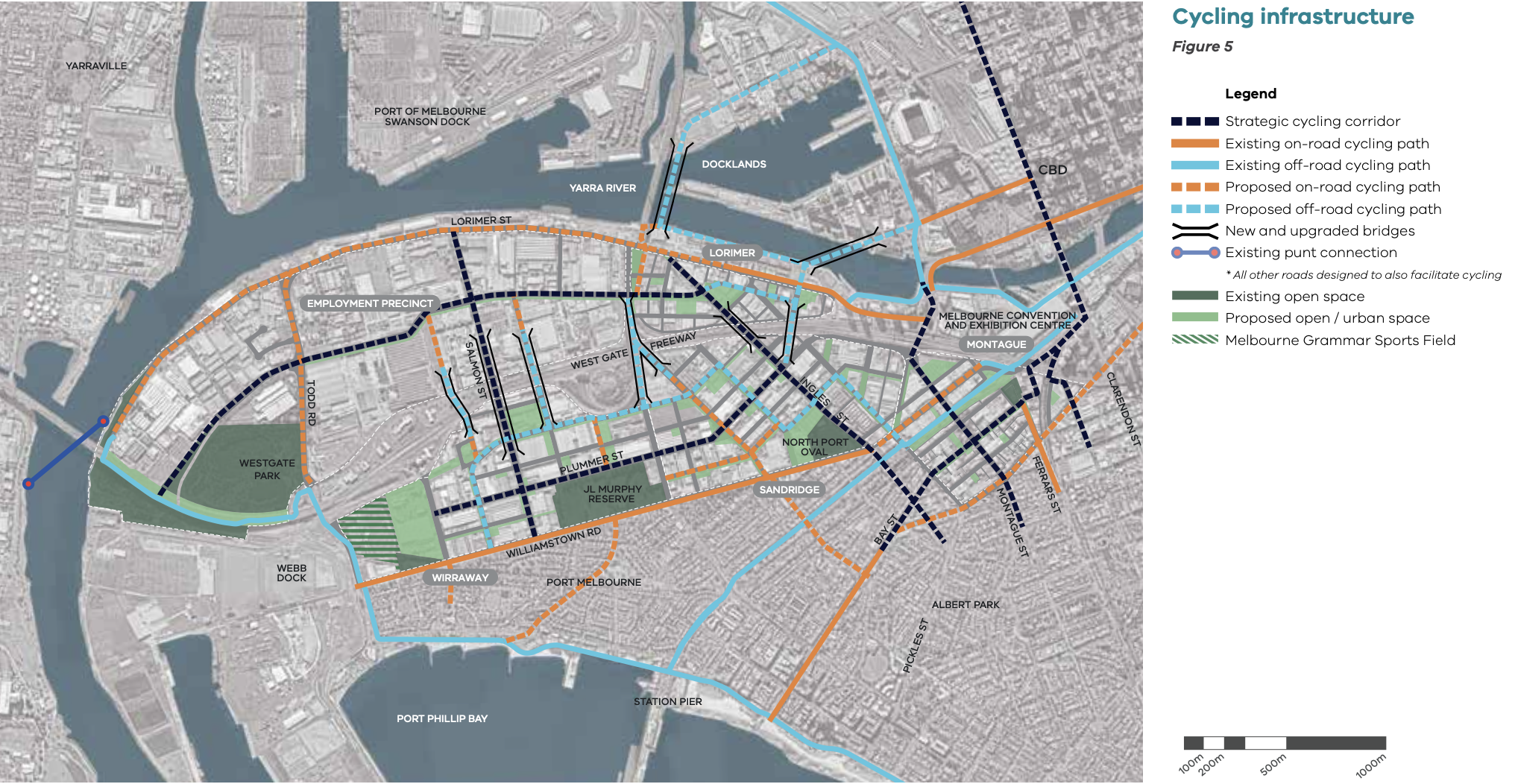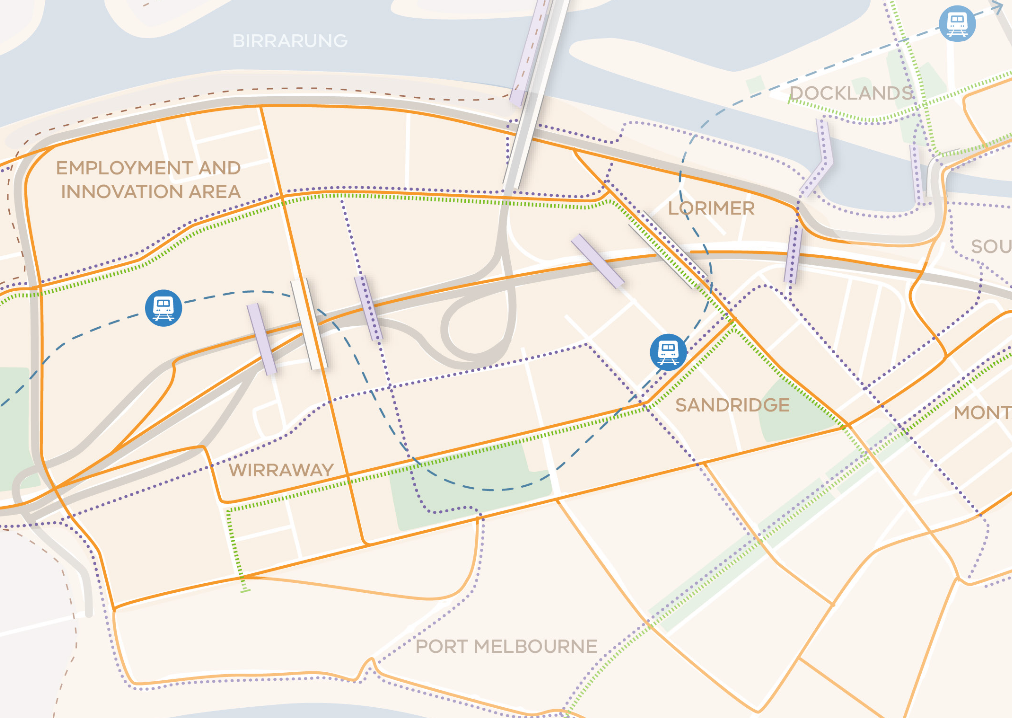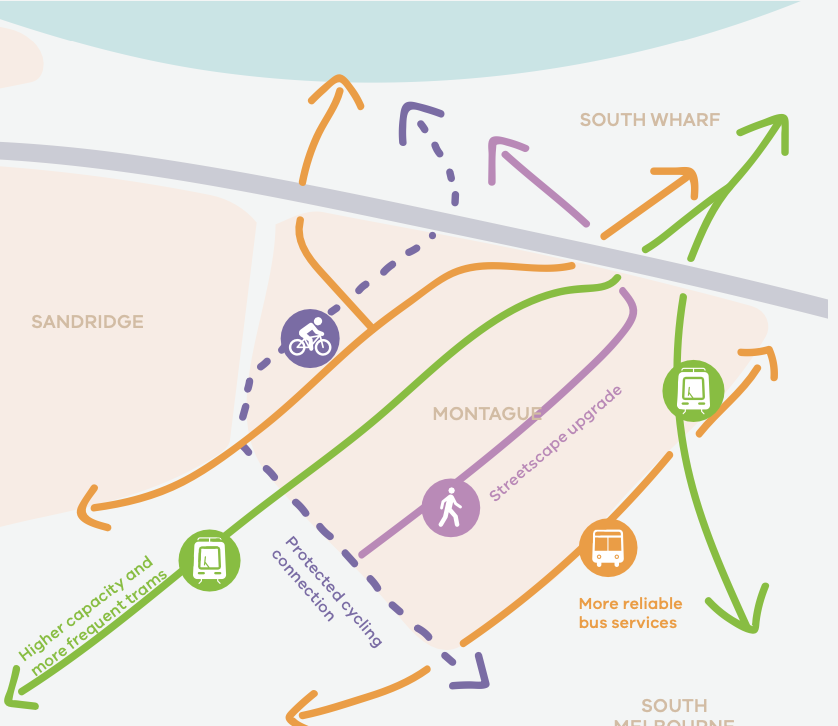PPBUG recently took City of Port Phillip councillors for a ride around Fishermans Bend, so we were interested to read the State Government’s latest framework , and Integrated Transport Plan, as well as the City of Port Phillip’s response. This was also covered in the ABC story ‘Melbourne's delayed Fishermans Bend redevelopment labelled 'biggest planning failure in Australia's history'.
Quick background: Fishermans Bend is an industrial district between Port Melbourne and the CBD. The plan is that it transitions from industrial to mixed uses, including housing. It is cut by the Westgate Freeway, with the south side part of the City of Port Phillip and the north, part of the City of Melbourne. There are few safe crossings of the freeway. Proximity to the city is seen as a key advantage, but provision of transport infrastructure has lagged.
What do the updated plans show? The Framework has good aspirations, with sustainability goals including Objective 1.3 Make Fishermans Bend an exceptional place to cycle, with a comprehensive cycling network indicated. More generally, the latest update deprioritises new train and tram links, in favour of buses.
These objectives translate into concrete goals in the Integrated Transport Plan, with division into Horizon One/Two/Three categories (ie immediate goals and ones for later).
Horizon One / Immediate priorities
The transport network in Horizon One will leverage existing assets and maximise their use to keep pace with growth, particularly in Montague and the Innovation Precinct. It will lay the foundations for growth in future horizons by stitching together precincts across major barriers with new walking and cycling connections.
The priorities for Horizon One are:
Provide safe access to new and existing schools for people walking and cycling
Improve the bus network with improved user convenience and comfort, revised routes and more services
Increase capacity on existing tram routes
Deliver new active transport connections across the West Gate Freeway
Improve freight access to the Port of Melbourne.
Let’s look at the cycling infrastructure planned in Horizon One.
New active transport bridges over the freeway. These are sorely needed—- currently the crossings on Salmon St and Ingles St are dangerous, both because of the narrow roads shared with heavy trucks, and the grates in the road surface. The alternative footpath connections are narrow and difficult to access (in some cases, requiring carrying bikes up narrow stairs).
There are 4 new active transport bridges across the freeway proposed. Two of these are part of Horizon One (ie immediate priorities). These will be expensive pieces of infrastructure.
Firstly, the bridge from Key Move 1 is the one between Salmon St and the Bolte on-ramp, apparently lining up with Douglas St to the north and Thackary Rd to the south. The active transport route running along this alignment makes a useful connection between the Turner St bike path (east-west route marked in green on the map below) and the Bay Trail. As well as the crossing of the freeway, this route would also require resumption of private land between Woolboard Rd and Plummer St, and crossings on Plummer St and Williamstown Rd.
Proposed 2050s Fishermans Bend Transport Network
Secondly, the bridge planned under Key Move 3 is the eastern one, as part of the cycling route along Boundary St (see below), and aligning to (another) new active transport bridge across the Yarra.
New priority cycling route in Montague (from Key Move 2). This appears to be along Boundary St. This is inconsistent with the Montague Precinct Plan, which appeared to have the NW/SE cycling route further east along Montague St. Meanwhile the parallel Strategic Cycling Corridor is further west along Ingles. If along Boundary St, would also require a new crossing of the tram line. Summary: planning here is confusing and unclear.
Safe access to the new Narrarrang Primary School. From Key Move 3. This is the new Fishermans Bend primary school. Unfortunately this has been already undermined by the Port Phillip Council, who have chosen to prioritise continued, two-way truck movement along Smith St outside the school. In the view of the Council, further safety upgrades will only happen “in the longer term (2045+) when existing commercial properties redevelop into residential uses”.
What’s missing? The existing planned Strategic Cycling Corridors (shown below) are not prioritised in this plan. In particular, the routes on Salmon St, Lorimer St, Plummer St and Montague St are missing. This is not necessarily a bad thing— for example, the Salmon St route could be covered by the new route through Douglas/Thackray St with the new bridge across the Westgate—- but only if those alternate routes are actually built. There is a narrowing window of opportunity to build out on-road, separated bike routes before the pressure to retain on-street parking becomes politically difficult—- and a danger that if we exclusively focus on high-cost/high value infra like the active transport bridges, we will miss these opportunities.
There are no east-west cycle routes between the Bay Trail and Turner St planned for Horizon One— this should be remediated by a straight-forward build-out of protected bike lanes on Plummer St.
Council response. The key message from the CoPP was “the lack of clear delivery timeframes or funding commitments from the Victorian Government is disappointing”. This is both a fair comment, and ironic given that CoPP has delivered so little in the areas for which it is responsible. Smith St is the most recent failure; the failure to deliver the high-quality cycle network planned in the ITS is ongoing.
All the cycling parts of the Fishermans Bend Integrated Transport Plan have Council as a delivery partner. Experience shows that Council has little capacity to deliver high-quality cycling infrastructure.
Summary
The Fishermans Bend Integrated Transport plan is a reasonable approach for building out cycling infrastructure, though there are inconsistencies with existing transport plans. We recommend adding Plummer St protected bike lanes to the Horizon One actions.
As this stands it is only a document: it needs a funding commitment and a delivery timeframe for this to be considered as credible.




